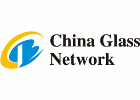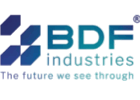More and more consumers are considering the sustainability of their actions. But they are not alone: as a company, we also ask ourselves how environmentally friendly our supply chain is and how much scope there is for further improvement. We therefore recently arranged for a Life Cycle Assessment (LCA) to be carried out so that we can evaluate the carbon footprint of our products. In this interview, Dr. Jörg Schappel gives an insight into the background to the LCA and the extent to which Kuraray takes sustainability on board. We also take a look with him at the future of a sustainable chemical industry.
Dr. Schappel, you recently arranged for a Life Cycle Assessment (LCA) of some Kuraray products. Can you explain why?
Dr. Schappel: We know that as a chemical company we have a relevant carbon footprint. Therefore, the aim of this independent assessment was to evaluate the sustainability of Kuraray products and identify scope for improvement. Above all, we wanted to find out what our own product-related CO2 emissions are. Moreover, our customers explicitly ask about our ecological footprint because they want to calculate their own carbon footprint and such information makes that more accurate. Since we did not have any expertise in this area, we contacted Sphera Solutions to provide the service. They have been involved in this side of the market for many years.
Why did you focus exclusively on product-related emissions?
Dr. Schappel: Such assessments look at three different types of emissions known as scopes. Scope 1 comprises the carbon footprint generated by a company by combustion of fossil fuels. That is less relevant for us, because all of the energy we use is purchased. That takes us to Scope 2: these are gases relating to purchased energy that are harmful to the climate. Since we already receive the relevant information from our energy providers, we have been able to calculate Scope 2 emissions ourselves for a long time. That is why they were not included in our LCA. Scope 3 focuses principally on the main factors affecting the carbon footprint of a product and the environmental impact of manufacturing the product. That was precisely what we wanted to find out.
Which specific products were assessed?
Dr. Schappel: We started with production in Frankfurt and Troisdorf because we wanted to get an idea of where we need to pay special attention in Germany in order to reduce our carbon footprint. So we looked at Kuraray Poval™, PVB resin and PVB film. We subsequently added our production facilities in Holešov in the Czech Republic because they also produce PVB film and SentryGlas®. Therefore, all KEG production in Europe was covered.
What were the exact factors investigated?
Dr. Schappel: The LCA covered everything required to manufacture the products, including the raw materials sourced by Kuraray and their transportation. The necessary energy and the other processing aids we need were also included in the calculation – for example, the water we use in the production process and the nitrogen required as a conveying medium. The waste generated in the production processes was also taken into account. Here, a distinction is made between hazardous and non-hazardous waste and the various disposal methods, in other words, whether the waste products are incinerated or disposed of in a different way. Naturally, wastewater treatment was also taken into consideration. The aim here was to identify how much wastewater is generated and the substances contained in the wastewater we discharge.
So how good were the results for the various products?
Dr. Schappel: Quite good! For Kuraray Poval™ (polyvinyl alcohol/PVOH), the result is 2.47 kilograms CO2 per kilogram PVOH. That is 30 percent below the average in Sphera’s database. Since Kuraray Poval™ is the raw material for PVB and this in turn is the starting product for PVB film, the very good results for Poval™ have an effect on all the products assessed and the values are far better than those of many of our competitors.
What were the specific findings of the LCA?
Dr. Schappel: Wastewater treatment has a big impact on the carbon footprint of PVB resin because the wastewater load is very high and the wastewater still contains many substances. Water is used as the solvent, resulting in large quantities of wastewater every day. By contrast, we found that transport played a very small role in CO2 emissions.
That’s surprising!
Dr. Schappel: Yes, it surprised us as well, because the PVB used to manufacture our PVB film is produced in Frankfurt and then transported to Troisdorf. Nevertheless, road transport accounts for less than one percent of our carbon footprint. However, it is apparently normal in the chemical industry that transport only accounts for a small proportion of CO2 emissions.
That’s interesting! To what extent does this LCA contribute to Kuraray’s overall goal of becoming more sustainable and reducing CO2?
Dr. Schappel: At the moment it is simply a snapshot of our situation. So far, we have only defined targets for Scope 1 and 2 emissions by 2030 – and naturally our target of net zero carbon emissions by 2050. We are currently calculating our Scope 3 carbon footprint and analysing what we can do to reduce it. However, it’s already clear that the main influences are raw materials and energy – regardless which product we look at. Looking at PVA, steam accounts for nearly one third of emissions.
When do you plan to complete this stage?
Dr. Schappel: We should have completed the calculations by the end of 2023/early 2024. Then we want to have the values certified. After that, we can set specific targets for reducing Scope 3 emissions. Naturally, we cannot reduce our carbon footprint on our own. We need our suppliers and service-providers to help. Sustainability means working together; no-one can save the world on their own. That is one reason why we co-founded the Process4Sustainability Cluster at Höchst Industrial Park.
What does the cluster do?
Dr. Schappel: The cluster is a network of industrial companies, research institutes and innovation alliances. Our common goal is to develop innovative solutions that save energy and resources to help Germany achieve its target of becoming carbon-neutral by 2045.
How exciting! Is Kuraray involved in other sustainability initiatives?
Dr. Schappel: Yes. We have been a member of the Renewable Carbon Initiative since the beginning of this year. This initiative is endeavouring to find different raw material sources and alternatives to oil. In principle, there are three options: bio-based alternatives, raw material streams obtained directly from CO2 and hydrogen and thirdly – and this will probably be the biggest source in the future – recycling streams. The members of the Renewable Carbon Initiative include many chemical companies, but there are also some companies from textile industry. Lego is also planning to join. Because this initiative is so broadly based and not confined to a single sector of industry, it also gets itself heard in Brussels.
You mentioned that the proportion of raw materials obtained from recycling streams should increase in the future. Could you give us some more details?
Dr. Schappel: There are a number of studies on what raw material sources for the chemical industry could look like. For example, bio-based materials will probably make up about 20 percent of the total. About the same proportion will come from CO2 and hydrogen. The lion’s share – 60 percent – will be obtained from mechanical or chemical recycling streams. In mechanical processing, the – cleaned – material is shredded, melted and returned to the production cycle. That is something we are familiar with from PET bottles. In chemical recycling, by contrast, the materials are separated into their original monomer components. For example, using pyrolysis, where high temperatures convert the plastics into oil. A steam cracker then produces monomers from the oil. Another chemical recycling process is plasma gasification. Here, a plasma beam separates the material into its original components.
What about the sustainability of other products? For example, for Mowital® and Trosifol®?
Dr. Schappel: Compared with the usual values in the database, they come out well too. Moreover, that is confirmed by our customers. That is one of the three reasons why we were presented with a sustainability award by our major customer in the glass industry, St. Gobain.
Congratulations!
Dr. Schappel: Thank you.
What plans does Kuraray have for sustainability in the future?
Dr. Schappel: The real work is only just starting. The LCA established the present situation. The Kuraray Group is also taking action in the energy sector: we are currently examining the purchase of green electricity. Our aim is not to use allowances to offset emissions but to use green electricity from the start, for example, by buying into a wind farm.
The steam required for the production of Kuraray products is also being examined in more detail. At present, it is produced from gas and finding alternatives is challenging. However, it would be possible produce steam from electricity – or to use green feedstocks such as biogas as a substitute for oil. Another option is synthetic methane obtained from CO2 and hydrogen. That is an alternative that has to be considered, even though it is still in the development phase.
Naturally, sustainable materials are more expensive than oil-based ones – so we need to take a close look at whether the prices are justified. After all, we have to pass the higher costs on to our customers. However, demand for sustainable alternatives is still low. For most customers at present, it is the price alone that counts. However, that will change in the future because customers also have to improve their sustainability.
What are chemical companies of a comparable size – in other words, your competitors – doing?
Dr. Schappel: All of them – for example, the likes of Covestro and BASF – are looking for alternative raw materials. Many customers in the chemical industry have already defined Scope 3 targets for 2030 so we need to take action by 2030 as well. As a result, everyone needs to place their raw materials and energy generation on a sustainable basis. At the moment, they are mainly using bio-based or partly bio-based materials.
What are the other big issues for the sector at the moment?
Dr. Schappel: Another big issue – especially for Kuraray – is carbon capture. In our activated carbon activities, where activated carbon is produced from hard coal, CO2 emissions are very high. Here, we are examining which technologies can be used to capture CO2 from exhaust gases and what could be done with it. The first possibility would be to store the CO2 permanently in the earth. The second would be to supply it to a user that could feed it back into a production cycle.
In principle, the sector is looking into many different aspects. However, many are still at the development stage and the processes take a long time. Younger colleagues often find this difficult to understand – and I would also like some things to move faster. However, much is still at the research stage or just being piloted and we are dependent on technologies that still have to be developed. That takes time. But such endeavours will no doubt gain pace from 2030 and be scaled up for industrial use.
Can people view the results of the LCA anywhere?
Dr. Schappel: Of course – on our website! The detailed findings are set out in free brochures, which can be downloaded from www.kuraray-poval.com/de/ and https://www.mowital.com/products/brochures/ (Life Cycle Assessment).
Dr. Schappel, thank you for a very informative interview!



























